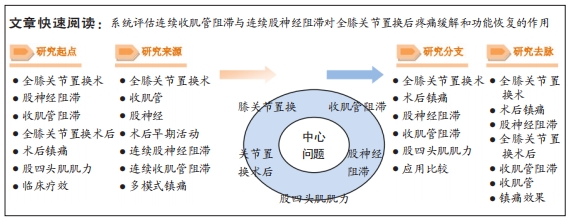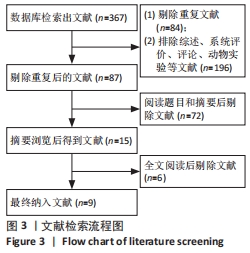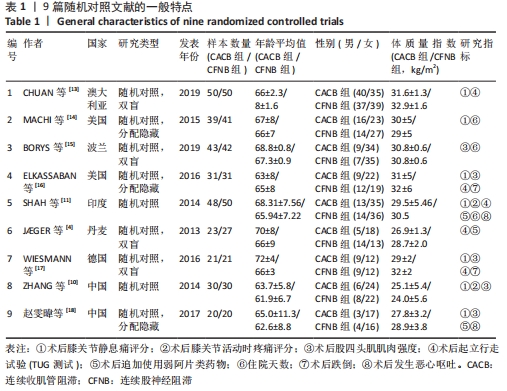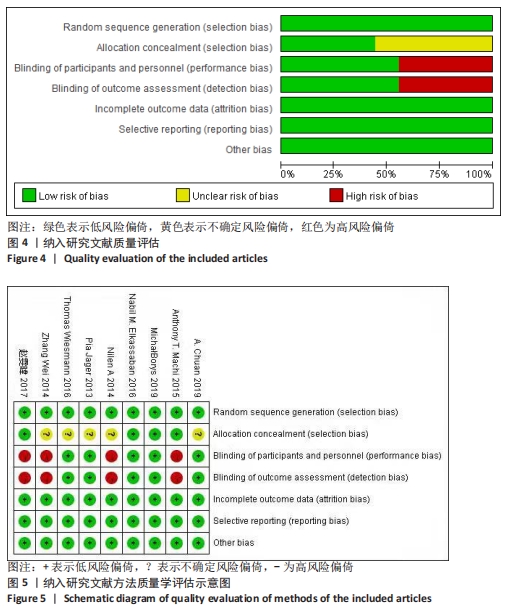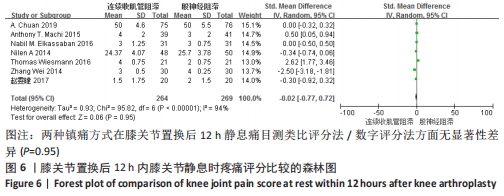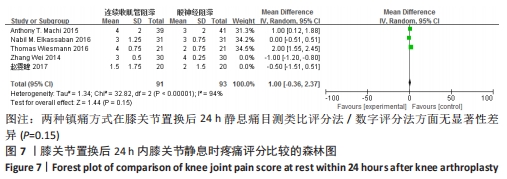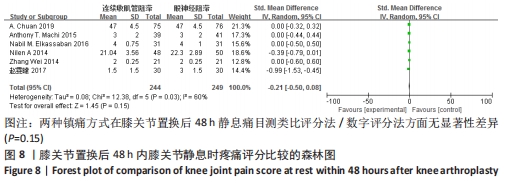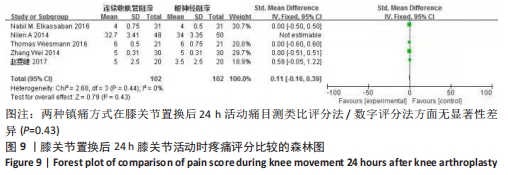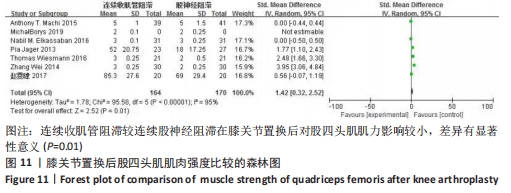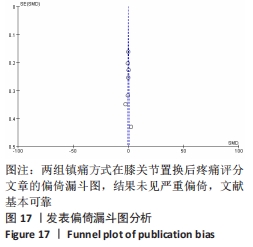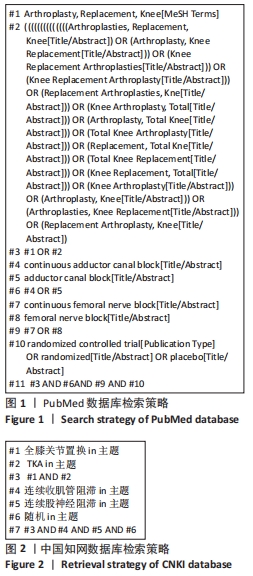[1] CRAM P, LU X, KATES SL, et al. Total knee arthroplasty volume, utilization, and outcomes among Medicare beneficiaries, 1991-2010. JAMA. 2012;308(12):1227-1236.
[2] ANDERSEN LØ, GAARN-LARSEN L, KRISTENSEN BB, et al. Subacute pain and function after fast-track hip and knee arthroplasty. Anaesthesia. 2009;64(5):508-513.
[3] GAO F, MA J, SUN W, et al. Adductor Canal Block Versus Femoral Nerve Block for Analgesia After Total Knee Arthroplasty: A Systematic Review and Meta-analysis. Clin J Pain. 2017; 33(4):356-368.
[4] JÆGER P, ZARIC D, FOMSGAARD JS, et al.Adductor canal block versus femoral nerve block for analgesia after total knee arthroplasty: a randomized, double-blind study. Reg Anesth Pain Med. 2013;38(6):526-532.
[5] HANSON NA, ALLEN CJ, HOSTETTER LS, et al. Continuous ultrasound-guided adductor canal block for total knee arthroplasty: a randomized, double-blind trial. Anesth Analg. 2014;118(6):1370-1377.
[6] LI D, YANG Z, XIE X, et al. Adductor canal block provides better performance after total knee arthroplasty compared with femoral nerve block: a systematic review and meta-analysis. Int Orthop. 2016;40(5):925-933.
[7] ZHAO XQ, JIANG N, YUAN FF, et al. The comparison of adductor canal block with femoral nerve block following total knee arthroplasty: a systematic review with meta-analysis. J Anesth. 2016;30(5):745-754.
[8] MEMTSOUDIS SG, YOO D, STUNDNER O, et al. Subsartorial adductor canal vs femoral nerve block for analgesia after total knee replacement. Int Orthop. 2015;39(4):673-680.
[9] GREVSTAD U, MATHIESEN O, VALENTINER LS, et al. Effect of adductor canal block versus femoral nerve block on quadriceps strength, mobilization, and pain after total knee arthroplasty: a randomized, blinded study. Reg Anesth Pain Med. 2015;40(1):3-10.
[10] ZHANG W, HU Y, TAO Y, et al. Ultrasound-guided continuous adductor canal block for analgesia after total knee replacement. Chin Med J (Engl). 2014;127(23):4077-4081.
[11] SHAH NA, JAIN NP. Is continuous adductor canal block better than continuous femoral nerve block after total knee arthroplasty? Effect on ambulation ability, early functional recovery and pain control: a randomized controlled trial. J Arthroplasty. 2014;29(11):2224-2229.
[12] KIM DH, LIN Y, GOYTIZOLO EA, et al. Adductor canal block versus femoral nerve block for total knee arthroplasty: a prospective, randomized, controlled trial. Anesthesiology. 2014;120(3):540-550.
[13] CHUAN A, LANSDOWN A, BRICK KL, et al. Adductor canal versus femoral triangle anatomical locations for continuous catheter analgesia after total knee arthroplasty: a multicentre randomised controlled study. Br J Anaesth. 2019;123(3):360-367.
[14] MACHI AT, SZTAIN JF, KORMYLO NJ, et al. Discharge Readiness after Tricompartment Knee Arthroplasty: Adductor Canal versus Femoral Continuous Nerve Blocks-A Dual-center, Randomized Trial. Anesthesiology. 2015;123(2):444-456.
[15] BORYS M, DOMAGAŁA M, WENCŁAW K, et al. Continuous femoral nerve block is more effective than continuous adductor canal block for treating pain after total knee arthroplasty: A randomized, double-blind, controlled trial. Medicine (Baltimore). 2019;98(39):e17358.
[16] ELKASSABANY NM, ANTOSH S, AHMED M, et al. The Risk of Falls After Total Knee Arthroplasty with the Use of a Femoral Nerve Block Versus an Adductor Canal Block: A Double-Blinded Randomized Controlled Study. Anesth Analg. 2016;122(5):1696-1703.
[17] WIESMANN T, PIECHOWIAK K, DUDERSTADT S, et al. Continuous adductor canal block versus continuous femoral nerve block after total knee arthroplasty for mobilisation capability and pain treatment: a randomised and blinded clinical trial. Arch Orthop Trauma Surg. 2016; 136(3):397-406.
[18] 赵旻暐,王宁,曾琳,等.膝关节置换术后连续收肌管阻滞与股神经阻滞的疗效比较[J].北京大学学报(医学版),2017,49(1):142-147.
[19] KARLSEN AP, WETTERSLEV M, HANSEN SE,
et al. Postoperative pain treatment after total knee arthroplasty: A systematic review. PLoS One. 2017;12(3):e0173107.
[20] LI S, ZHOU J, LI X, et al. Analgesic Impact of Single-Shot Versus Continuous Femoral Nerve Block After Total Knee Arthroplasty: A Systematic Review and Meta-Analysis. Adv Ther. 2020;37(2):671-685.
[21] ANGERS M, BELZILE ÉL, VACHON J, et al. Negative Influence of femoral nerve block on quadriceps strength recovery following total knee replacement: A prospective randomized trial. Orthop Traumatol Surg Res. 2019;105(4):633-637.
[22] BOLARINWA SA, NOVICOFF W, CUI Q. Reducing costly falls after total knee arthroplasty. World J Orthop. 2018;9(10):198-202.
[23] TURBITT LR, MCHARDY PG, CASANOVA M,
et al. Analysis of Inpatient Falls After Total Knee Arthroplasty in Patients With Continuous Femoral Nerve Block. Anesth Analg. 2018; 127(1):224-227.
[24] KUANG MJ, MA JX, FU L, et al. Is Adductor Canal Block Better Than Femoral Nerve Block in Primary Total Knee Arthroplasty? A GRADE Analysis of the Evidence Through a Systematic Review and Meta-Analysis. J Arthroplasty. 2017;32(10):3238-3248.e3.
|
